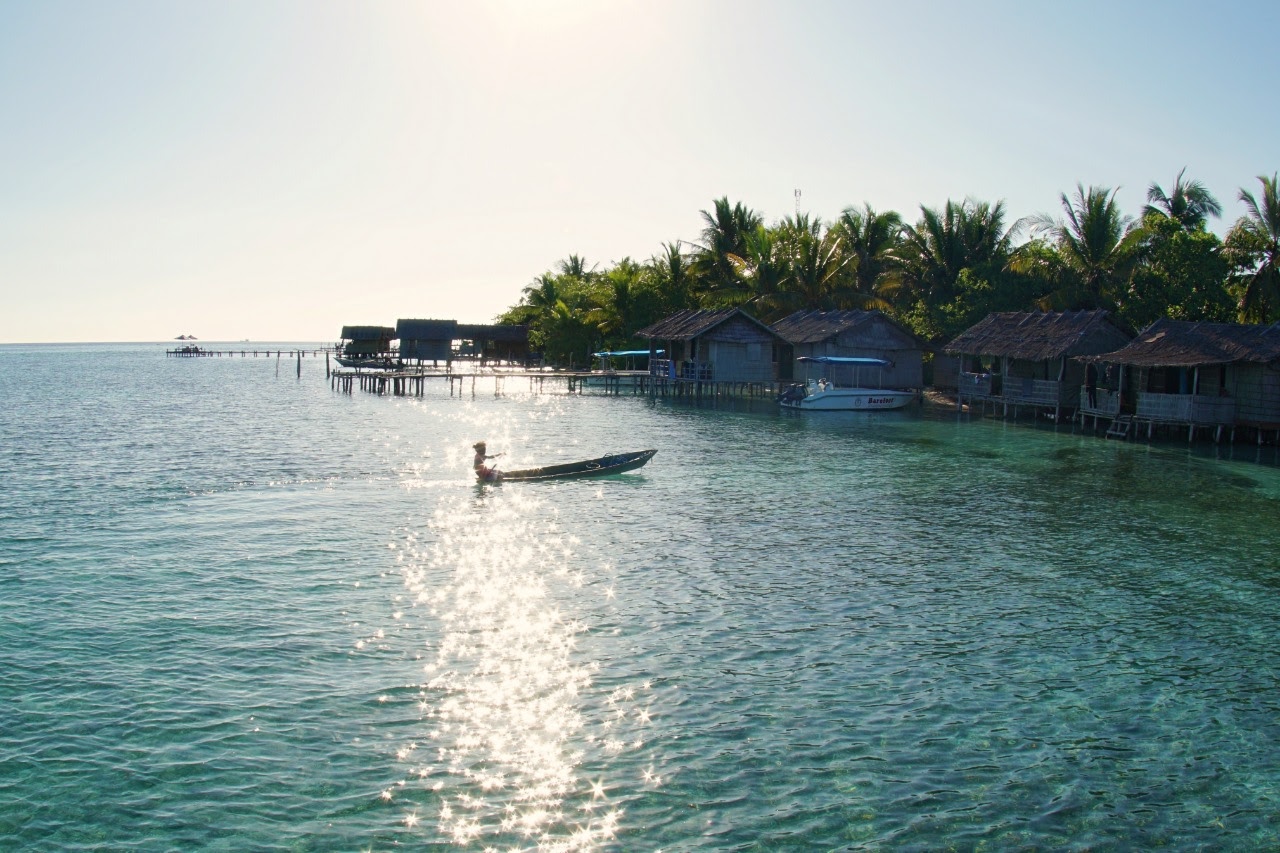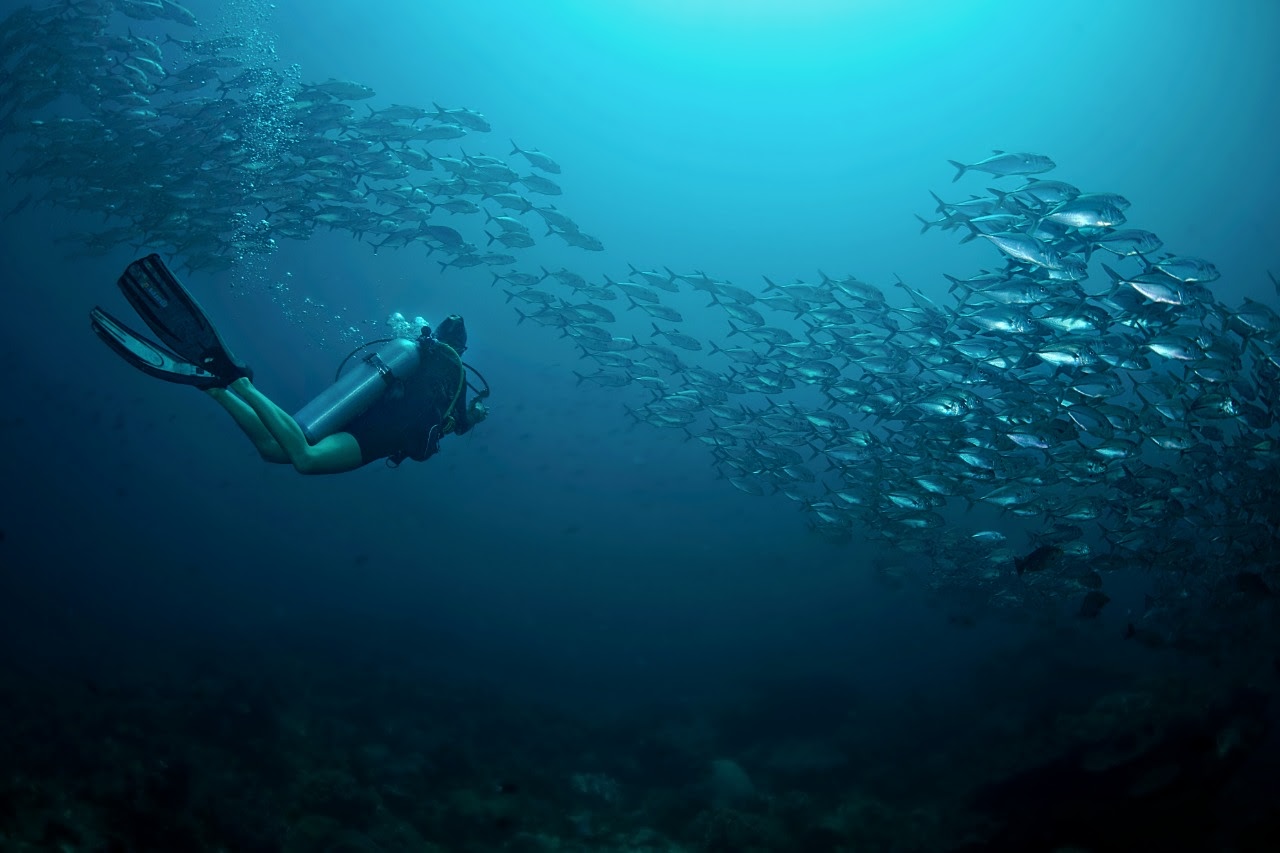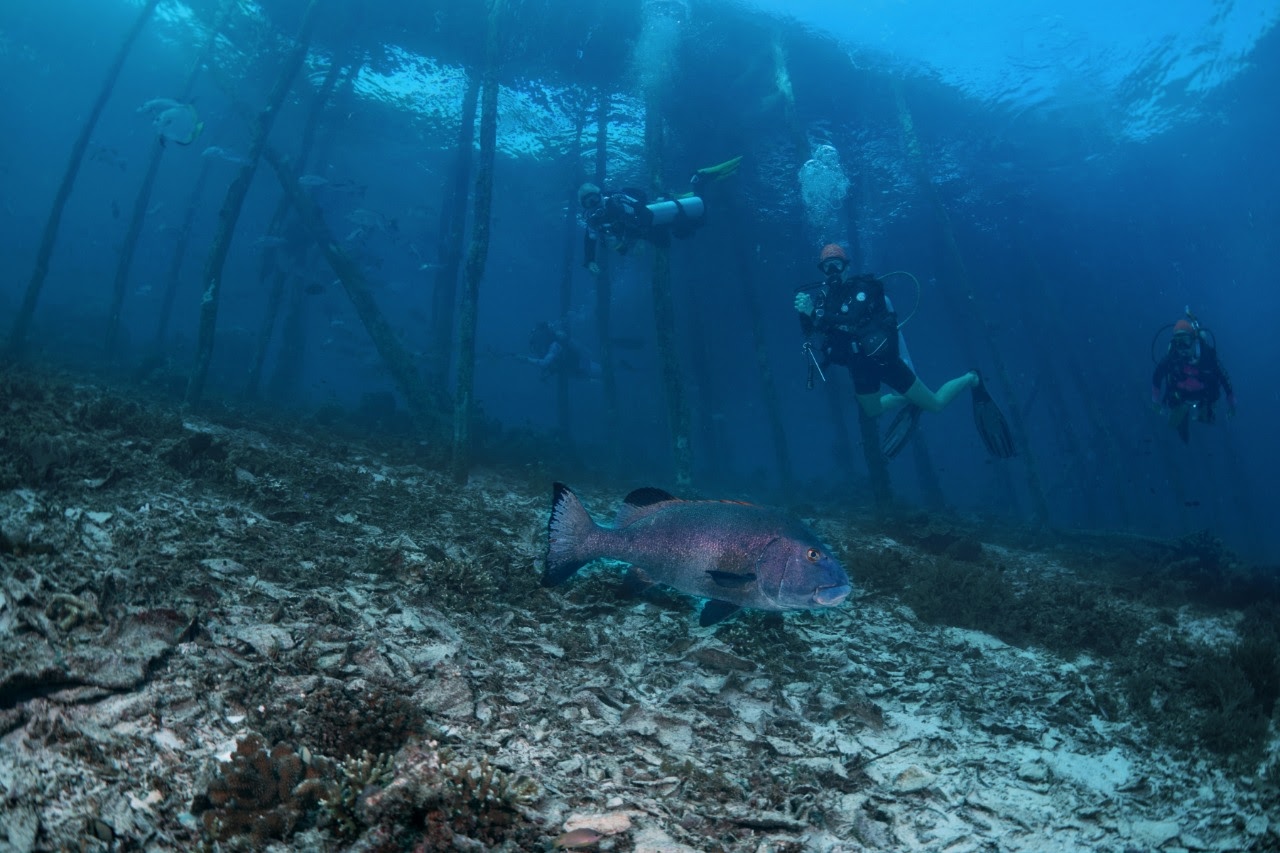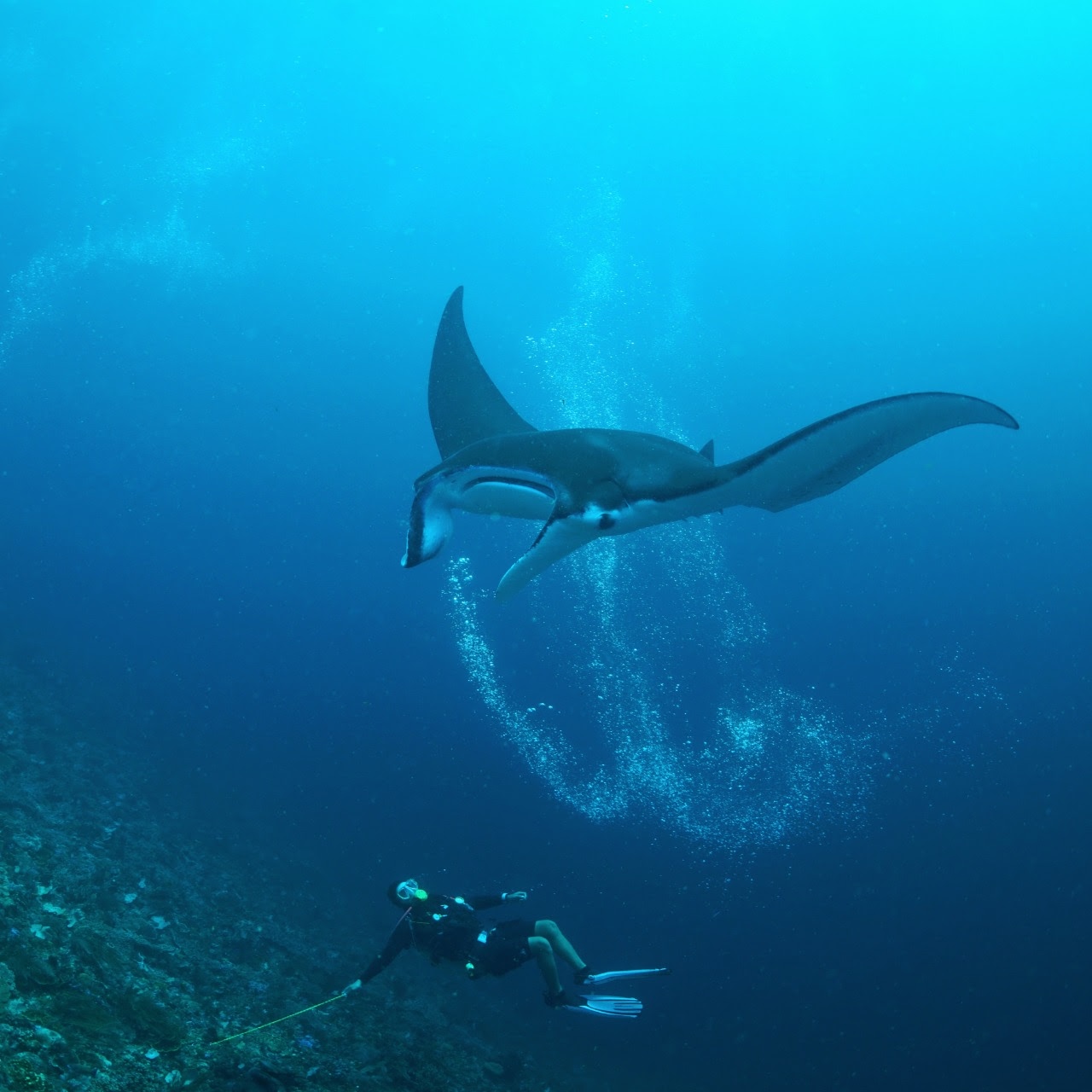We will travel over night into the northern section of Raja Ampat, where we will wake up at the southern end of Kawe island. Here we will dive on the beautiful dive site of Eagle Rock. There is a collection of three small islands all relatively close, we will begin with the site on the left hand side, where the reef starts at the waterline running down to plus 40m on the northern side. This dive site has a layering of rocks dropping down into ledges, making it a very dramatic topography, and the substrate is covered in a carpet of soft, hard and black corals. Grey Reef sharks can be spotted here, along with white tip, black tip and wobbegong’s. With schooling fusiliers, snappers, sweetlips, bumped parrot fish, this site is a delight for your eyes! An interesting variation of nudibranchs can also be found here, one especially cool one is the solar paneled phyllodesmium nudibranch reaching 12 cm. From the months of September/October through to April/May this dive site also becomes home to the reef mantas where they come to get cleaned. There is several locations where they tend to clean on this site, some very special sightings can be experienced. We will then travel further north to just south of the equator and jump in for dive two at Black Rocks. Remember to lookout for dolphins at this point on the surface, pods are commonly spotted, sometimes they will jump with the Ratu Laut boat as we travel to the dive site. Black Rocks is easily identified by some harsh jagged rocks shooting up out of the surface. We will jump in, out in front of the current and enjoy the large schooling of fish life experience on this dive site. You will be surrounded by schooling fusiliers, big eyed jacks, surgeon fish, bat fish along with a beautiful coral garden especially up in the shallows of this dive site where the skinny pinnacles of rock head up to the surface, each one is covered in a layer of bright soft corals and bright orange cup corals. There is often sea turtles spotted here, both green and hawksbill, and sharks are commonly spotted. Peacock mantis shrimps often run around the rocky substrate and orangutan crabs can be seen filtering through the platonic soup catching food. At both Eagle Rock and Black Rocks it is possible to shoot both wide angle and macro subjects. We will then head back south into the dramatic landscape of Aljui Bay, with the large limestone islands shooting up out of the flat waters. We will check in the village of Selpele and then dive one of the excellent macro sites as our afternoon dive. There are many fantastic sites in Aldi bay, mostly focusing on macro, depending on the currents we will choose the most appropriate. One excellent dive site is White Arrow, a sloping reef where we can find the yellow colouration of Bargibanti pigmy seahorse and the fantastic fire urchins with the Coleman's shrimps inside. Along with pigmy cuttlefish, a large selection of nudibranchs, pipefish, whip coral shrimps, snake eels and many more. For the evening we will head out for a rewarding night dive out in front of the Pearl Farm. We will drop down on to the sandy substrate for a world class muck dive, and to be honest, you never really quite know what could turn up on this site! (4 dives)









































